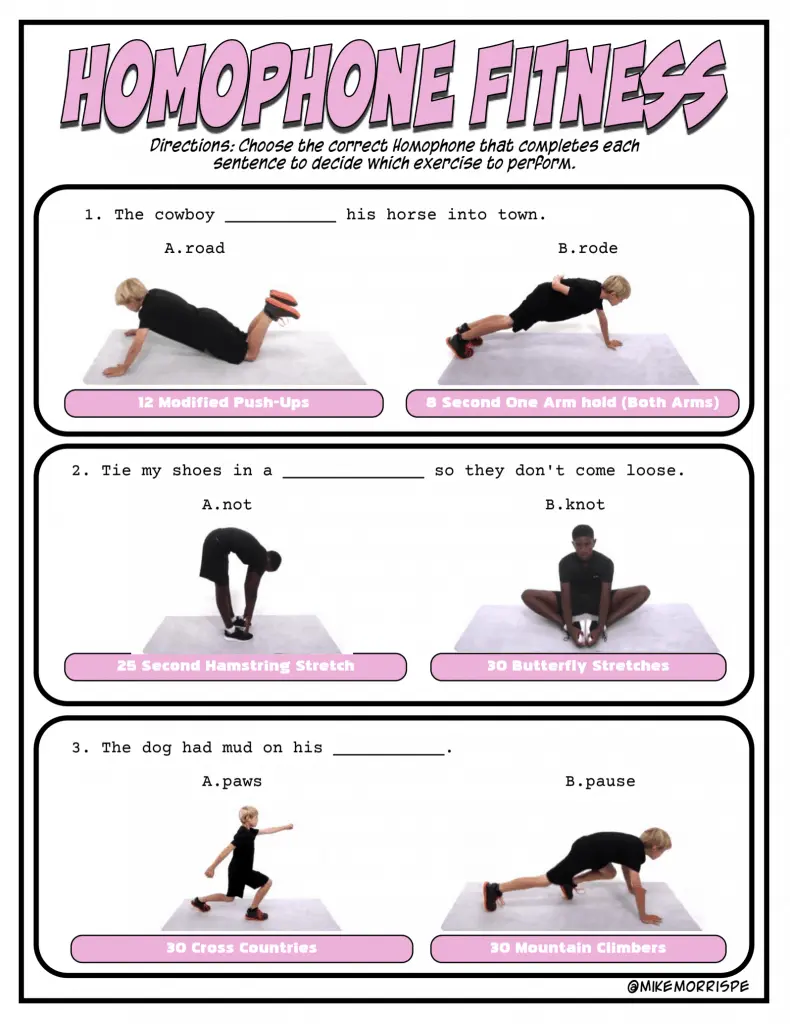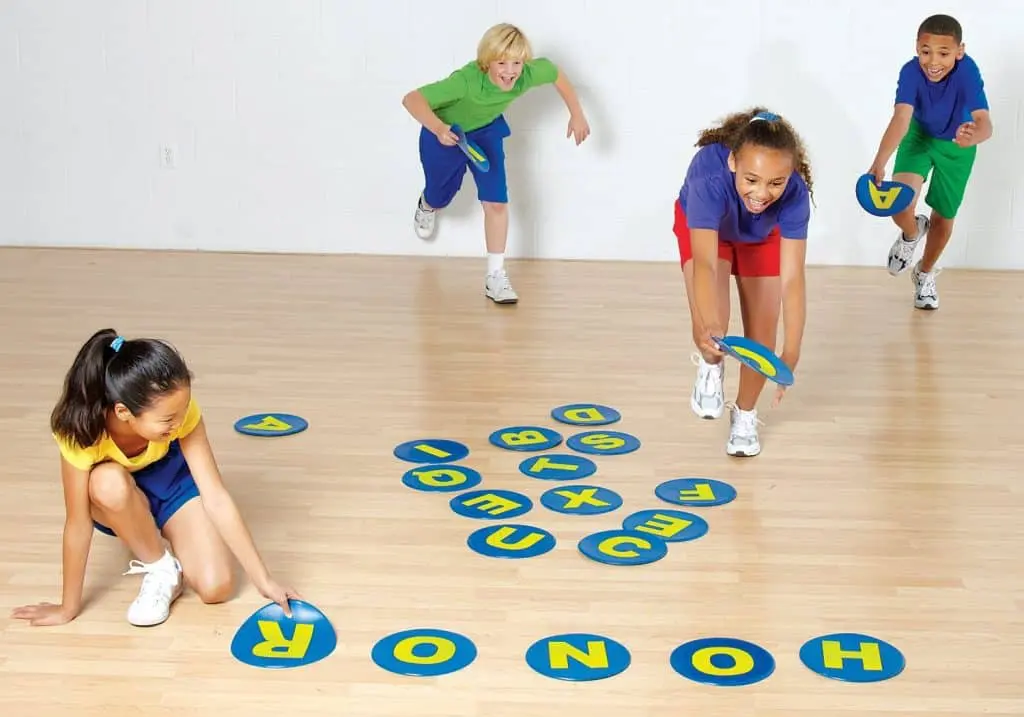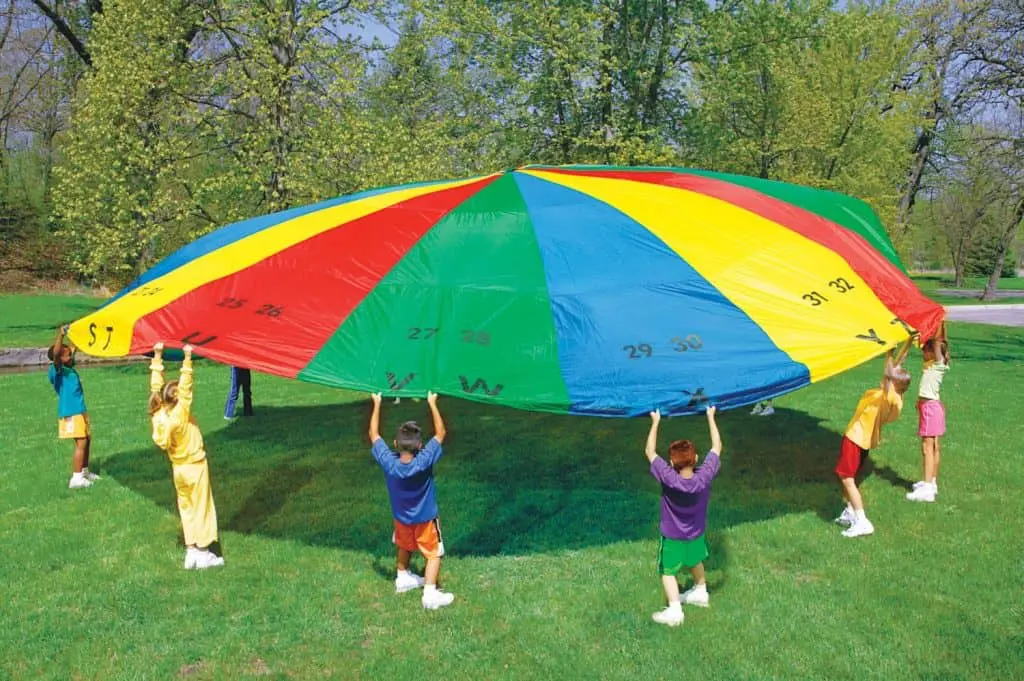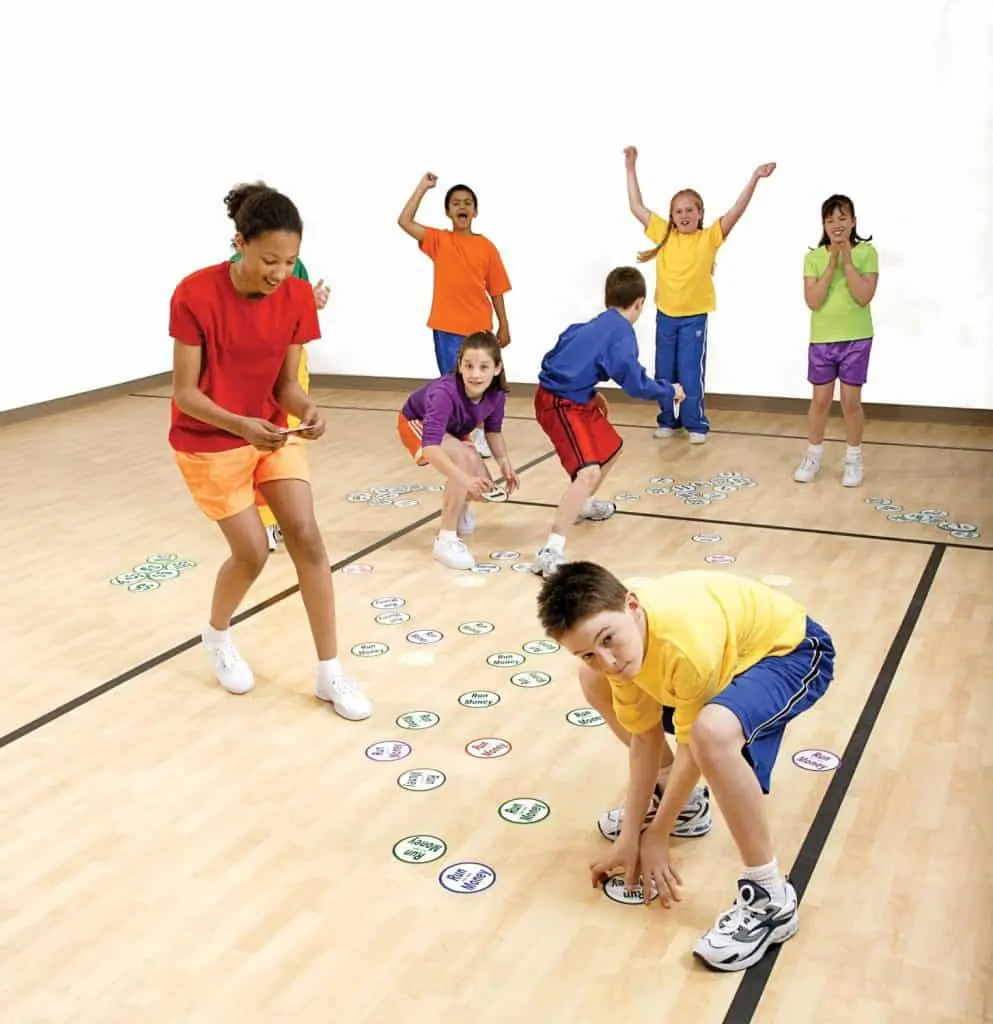For most students, Physical Education is the highlight of their day. Research has shown that action and movement stimulate the body, which in turn stimulates the brain and a person’s ability to learn and retain information. Simply put: Kids learn better when they are moving! Integrating academics in PE can help clarify concepts to students having difficulty in a classroom setting or strengthen their understanding of that concept. By integrating academics into Physical Education, we cannot only provide our students with the skills and confidence to be lifelong movers, but also contribute to them having a solid educational foundation.
Here are a few cross-curricular activities that I have created to engage students and support academics. These activities are designed to incorporate movement, physical skill development, and academic content into your Physical Education classroom.
1. Homophone Fitness
Homophones, or words that sound the same but are spelled differently, are a source of trouble for many elementary-aged students. Homophone Fitness is an English language arts integration activity that helps students think about words in a sentence and promotes critical thinking, comprehension practice, and physical fitness.
How to Play: Students may work with partners or in small groups. On the teacher’s signal, one student in each group retrieves a Homophone Fitness sheet. They take the sheet back to their group and choose the correct homophone that completes each sentence on the sheet to decide which exercise to perform. Each group tries to complete as many sheets as it can. When students finish with one sheet, they may exchange it for another. Click here to download homophone Fitness Sheets.
2. Bone Collectors
Many students struggle with fractions because fractions can have multiple meanings and are sometimes written in unusual ways. Bone Collectors is an activity that uses dominoes and movement to help students compare and contrast fractions. For this activity, divide students into two teams. Each team starts on opposite ends of the playing area. Place dominoes in the middle of the playing area, inside hula hoops, face down.
How to Play: Students travel to the middle of the playing area where they meet an opponent from the opposite team. They both flip a domino and compare the fraction shown on it (numerator must be the small number) with their opponent. The winner returns with the domino and places it in his/her team’s hula hoop. The student with the lower fraction must put the domino back face down, return to the starting point, then return to the middle. Students play until all dominoes are gone. The team with the most dominoes at the end of the activity wins. If students pull the same fraction, they both return to the end of their line with the domino.
Variations: Students in lower grade levels can compare the number of dots on dominoes.C
Bone Collectors- Comparing fractions and number of objects. Team w most dominoes WINS. —> https://t.co/idJ3j1aD0O #PhysEd #integration pic.twitter.com/WO2gfRji66
— Mike Morris (@MikeMorrisPE) March 17, 2017
3. Loose Change
Counting money is a skill all students will use for the rest of their lives. The ultimate goal of having students understand money is to enable them to use money. Using play money in Physical Education can help with these concepts.
Equipment needed: Hula Hoops, Buckets, Play coins (pennies, nickels, dimes, and quarters), buckets.
Set Up: Divide students into groups of 3 and have them stand on one end of the playing area. Scatter coins on the opposite end of the playing area. Each team needs a hula hoop and a bucket to place collected coins in.
How to Play: Students take turns rolling their team’s hula hoop, trying to get the hoop to land on the play money coins scattered at the opposite end of the play area. Whichever coin(s) the hoop lands on, students retrieve those coins and take them back to their team bucket. Students are allowed to collect only coins that are fully inside the hula hoop. When all the coins are collected, or the allotted time ends, students add up the change that their team collected. The team that accumulates the most change wins.
Variations:
Instead of using play coins, used play money bills for younger students.
LOOSE CHANGE- ss roll hula hoops to collect play money coins. Ss are only allowed to retrieve coins that are fully inside the hoop. At the end of the game ss add up the change. The Team that accumulates the most money = winner. Large play coins from @DollarGeneral #PhysEd pic.twitter.com/uQJSB1oa2J
— Mike Morris (@MikeMorrisPE) May 23, 2018
Follow me on twitter @MikemorrisPE or Visit my website www.mikemorrispe.com for Physical Education activities and resources.
Related Posts:
– 3 Common Core Games to Get Administrator Buy In by Jason Gemberling
– STEM in the Gym: Tips and Activity Ideas for Physical Education by Eric Turrill
– Elementary Cross-Curricular Activities – Learning by Doing by Mike Graham
Related Equipment:
–Alpha-Spot™ Activity Set: Add spelling and sequencing challenges to your movement activities and games.
– Cross-Curricular Chute™ Parachute: Spell words and play math games all while strengthening students’ upper bodies with games that require teamwork!
– Run for the Money™ Set: Combines math and currency games with physical fitness.








